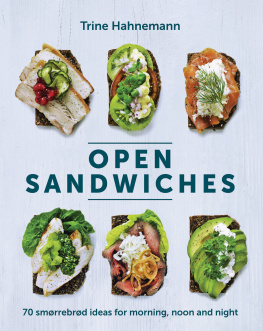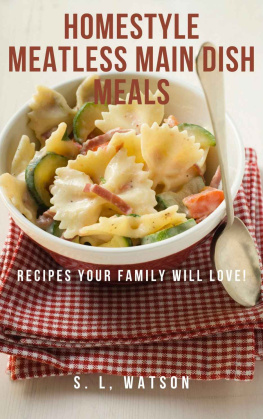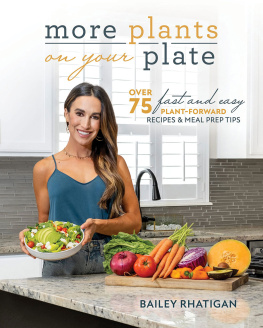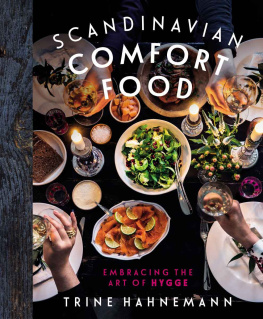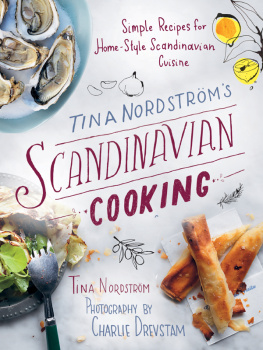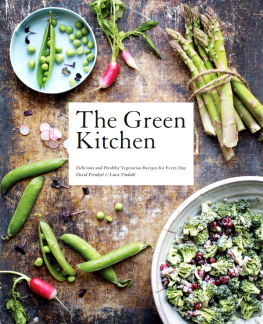To my father Peter, who taught me how to live my life.
In many ways, I have been working on this book ever since I started cooking. Ive always loved vegetables and this book was ever-present at the back of my mind, just waiting to be written. I have had long spells of my life where I did not cook meat at home. I never labelled myself vegetarian it was merely a preference. I have always enjoyed a good roast chicken, grilled fish, lamb stew or meatballs when going out, a great burger at festivals, amazing street food when travelling, duck for Christmas and a celebratory omnivorous dinner at a friends house: curiosity and flavour have consistently guided my eating. But, at home in my own kitchen, vegetables have always ruled. When my children were growing up they longed for meat, so I would cook it almost every day and patiently await the time when they, too, grew into understanding their own palates and adding more and more vegetables to their plates.
While I was putting the finishing touches to this book I had been cooking all day and was waiting for Columbus, the photographer, to arrive on what was supposed to be the last day of shooting the pictures I received a phone call. My father had been taken ill and was on his way to hospital. I stopped, then thought: he is going to be fine. I could not believe anything serious was going on. I was not ready.
It did not work out that way, because my father had died, as I learned 30 minutes later. I did not finish this book that day.
So, I did the last of the rewriting, recipe testing and photography while grieving. It gave me time and space to think about my father and all the meals we shared and cooked for each other. We never really cooked together. Mostly we took turns and enjoyed not being the one slaving in the kitchen, but providing the entertainment while drinking a glass of wine.
My father was a great home cook; me and my siblings grew up with good food. He did not teach me many things directly, rather he taught me by example. When I say that, I mean he never sat me down and explained the world to me. There was, though, one lesson that he gave me: It is all the things you choose and dont choose that will define you. He meant that there is so much in the world, so you have to navigate it by deselecting the inessentials and focus on what remains.
You could say that goes for cooking as well. Choosing ingredients, spices and herbs is also about not selecting things, striving for the perfect balance.
When I was growing up, we did not eat traditional Danish food all the time, as my friends mostly did. We ate ratatouille, hummus, chicken with yellow and red peppers in white wine, roast lamb with lots of garlic, a minced meat dish called skramsgaderet with curry powder, leeks and carrots, that you eat with yogurt and mango chutney (that recipe is in my book Scandinavian Comfort Food). And my father made the best spaghetti Bolognese I have ever tasted.
When we went sailing, we would cook fish and summer vegetables; my father had a great recipe for garfish, potatoes, peas, asparagus and dill.
For lunch we always ate rye bread sandwiches with salami and cheese. He would be sitting on the deck steering the boat; I would be standing in the cabin, looking out at the sea while making the sandwiches. I handed them to him, one at a time, with a cup of black coffee with sugar.
He was not a traditional father, but he taught me to take responsibility for my own wellbeing, to own the choices I made. I was taught the joy of cooking because we always ate home-made food. Even when things were crazy in the early 1970s and I was a little girl, I could always count on dinner being served. The grown-ups would gather to cook and would sit down and eat, whereupon the conversations about the world would begin.
Later in his life, my father refined his cooking: he turned out great risotto, vegetable pastas and salads, and he made a masterly crme brle. He also enjoyed numerous dinners in my kitchen. He would call me in the afternoon and say: It is Peter. Are you home tonight? Im coming for dinner. He really liked it when I cooked fish, a reference to his endless love of the sea. Sometimes he would get a certain look and nod his silent approval, so I would know he was really enjoying what he was eating.
I also loved to serve a great wine to him and register that same subdued joy. During the last couple of years of his life, he visited me at my caf in the sterbro district of Copenhagen, where he was served two pieces of smrrebrd, one always with boiled potatoes and fried onions. Without saying it in so many words, I knew he really liked the new place I had created. He always said: Tak for mad Thanks for the food to me and my staff.
Food is about heritage and tradition; your cooking can evolve from there. I was given a great gift for which Im very grateful: growing up, I was taught the value of good food and given an understanding of cooking. Food was not as exciting when I was growing up as it is now, but I did not know that, so I was excited about what we had. As the world of food evolved, I followed where it took me. I learned so much and have so much to be thankful for, and it all started because I was brought up around the dinner table.
I was given the freedom to be the person I wanted to be. My father had great faith in me and never doubted I could fight my own battles and create the life I wanted. My life became about understanding the world through food. I hope this book about vegetables cooked with love will bring joy to kitchens around the world.
I get very excited about vegetables. I feel a sense of profound happiness when I walk through fields full of vegetables, check on greens bubbling on the stove or receive a box of freshly harvested vegetables in my kitchen. My enthusiasm takes on new forms every year, and, for me, cooking has never been more exhilarating. I honestly think you can make the best-tasting meals from vegetables and I have always felt that the true challenge of cooking is the transformation of vegetables into great dishes.
Eagerly waiting for a new vegetable or fruit to come into season is envigorating and encapsulates the joy and variety of cooking, even when you are just finding lots of different ways to cook asparagus over and again. A plant-based diet is the future, and so much delicious food is ahead of us. Why should it be so difficult to cut back significantly on eating meat and dairy, especially in the western world? Now is the time to do it more than ever.
Philip Larkin wrote, Most things may never happen. That is how climate change has felt for decades. The next clause in Larkins poem is, this one will. This is where we are now. Global warming used to be so abstract that we began to hope it might not happen at all; in the 1990s the thinking was: we will figure it out, technology will fix it. Along with them, I always liked to dream big and think that everything was possible. But it is not. We have finite resources. A lot is possible, yes, but not everything... does it need to be?


